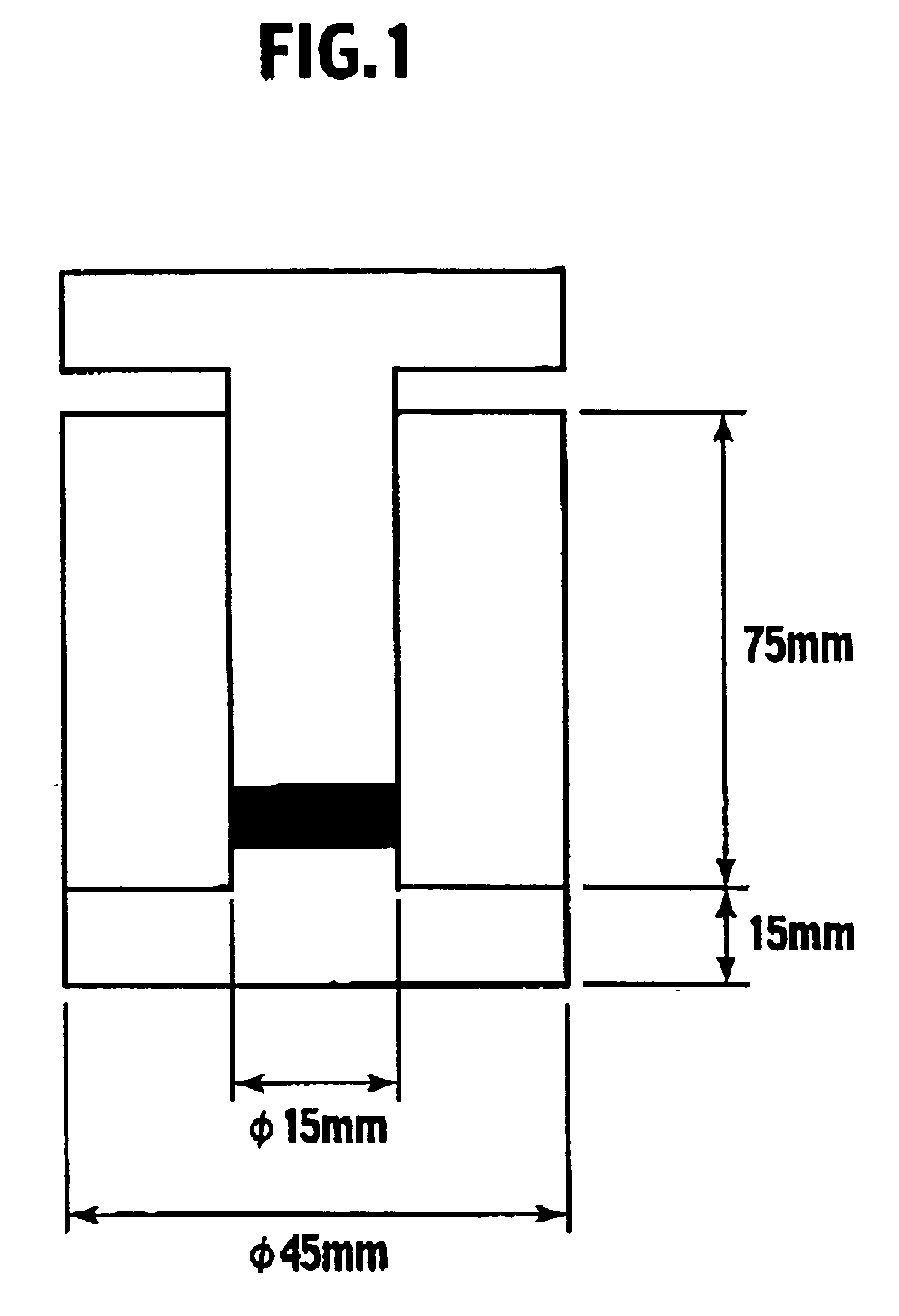Non-aqueous electrolyte secondary battery-use cathode material, production method therefor, non-aqueous electrolyte secondary battery-use cathode and non-aqueous electrolyte secondary battery using the cathode material
- Summary
- Abstract
- Description
- Claims
- Application Information
AI Technical Summary
Benefits of technology
Problems solved by technology
Method used
Image
Examples
examples
[0057] In what follows, the invention will be more detailed with reference to examples.
1. Preparation of Raw Material Graphite Particles
[0058] One hundred parts by mass of cokes powder having an average particle diameter of 5 μm, 40 parts by mass of tar pitch, 25 parts by mass of silicon carbide having an average particle diameter of 48 μm and 20 parts by mass of coal tar were mixed, followed by further mixing at 270° C. for 1 hr. An obtained mixture was pulverized, followed by molding under pressure into pellets, further followed by firing in nitrogen at 900° C., still further followed by graphitizing at 3000° C. by use of an Acheson furnace, followed by pulverizing by use of a hammermill, further followed by sieving with a 200 mesh standard sieve, and thereby graphite particles were prepared. According to a scanning electron microscope (SEM) photograph of the obtained graphite particles, the graphite particles were found to have a structure where a plurality of flat particles a...
examples 1 through 4
[0072] Each of solutions obtained by dissolving 12 g (example 1), 6 g (example 2), 3.6 g (example 3) and 1.2 g (example 4) of coal tar pitch (softening point: 98° C. and carbonization rate: 50%), respectively, in tetrahydrofuran to be 900 g was poured into a flask provided with a condenser, and thereto 600 g of graphite particles shown in Table 1 was added. The solution was heated to a boiling point under agitation in a water bath, followed by mixing for 1 hr. In the next place, the solution containing the graphite particles was transferred to a rotary evaporator, followed by removing tetrahydrofuran, further followed by drying at 100° C. for 1 hr by use of a vacuum dryer, and thereby graphite particles covered with coal tar pitch were obtained. The obtained graphite particles covered with coal tar pitch were heated to 1300° C. at a temperature rise rate of 20° C. / h under nitrogen stream, held there for 1 hr, and thereby graphite particles covered with carbon were obtained. The obta...
examples 5 through 7
[0077] In ion exchange water where 1 g of sodium dodecylbenzene sulfonate was dissolved, 154 g (example 5), 76 g (example 6) or 30 g (example 7) of polyvinyl alcohol (polymerization degree: 1700 and completely saponified type) was dissolved. The obtained mixed aqueous solution and 2000 g of graphite particles shown in Table 1 were poured in a twin-arm kneader having a heater unit, blended for 1 hr at room temperature, followed by elevating the temperature to 120° C. to evaporate and remove water, and thereby graphite particles covered with polyvinyl alcohol were obtained. The obtained graphite particles covered with polyvinyl alcohol were heated at 200° C. in air for 5 hr to make polyvinyl alcohol nonmeltable, followed by elevating a temperature to 900° C. at a temperature rise rate of 20° C. / h under nitrogen stream and holding there for 1 hr, and thereby carbon covered graphite particles were obtained. The obtained carbon covered graphite particles were pulverized by use of a cutte...
PUM
 Login to View More
Login to View More Abstract
Description
Claims
Application Information
 Login to View More
Login to View More - R&D Engineer
- R&D Manager
- IP Professional
- Industry Leading Data Capabilities
- Powerful AI technology
- Patent DNA Extraction
Browse by: Latest US Patents, China's latest patents, Technical Efficacy Thesaurus, Application Domain, Technology Topic, Popular Technical Reports.
© 2024 PatSnap. All rights reserved.Legal|Privacy policy|Modern Slavery Act Transparency Statement|Sitemap|About US| Contact US: help@patsnap.com









